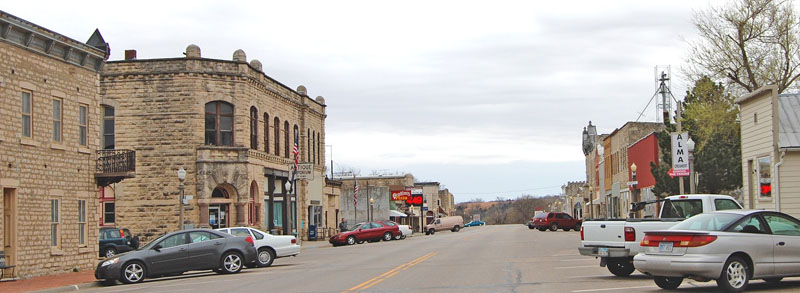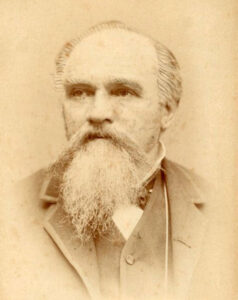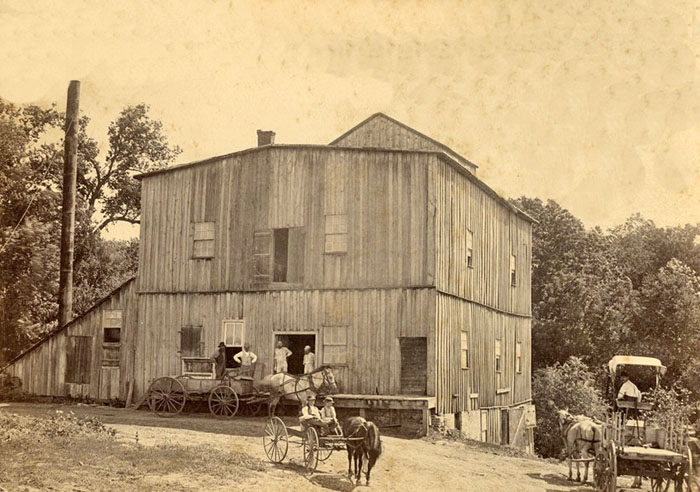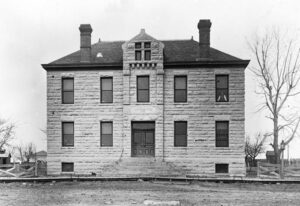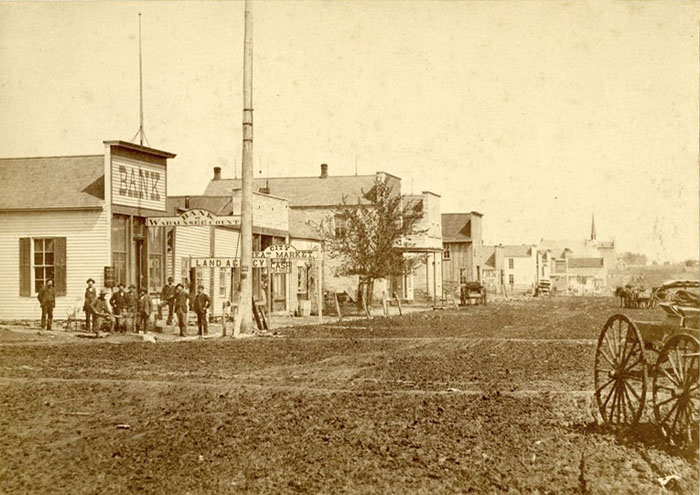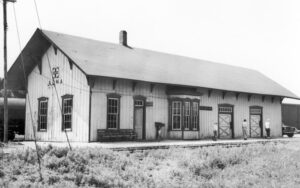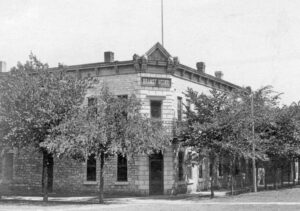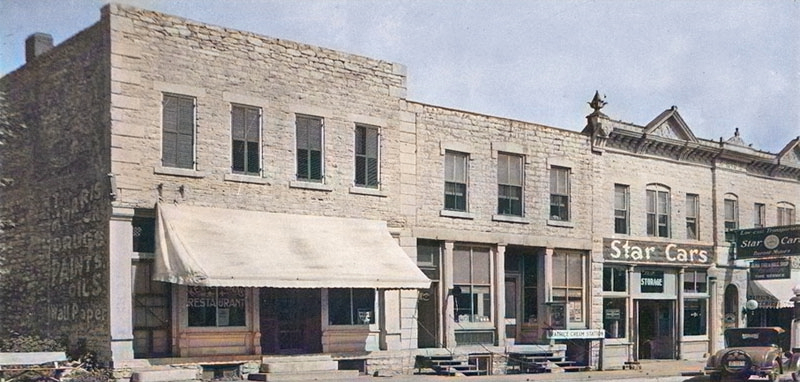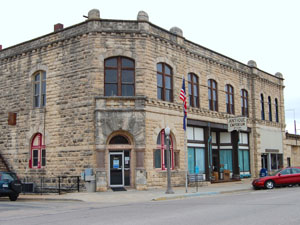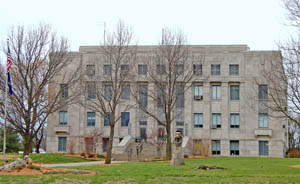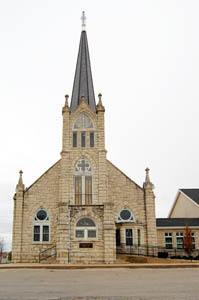Alma, Kansas, is a small community nestled in the heart of the Flint Hills and the county seat of Wabaunsee County. As of the 2020 census, the city’s population was 802.
Members of the Potawatomi tribe initially occupied the Alma area before being settled by the Swedes, the English, the Irish, and the Germans in 1858.
Also known as the “City of Native Stone,” Alma was founded in 1858 when its founder, Gottlieb Zwanziger, built a mill on the west branch of Mill Creek, one mile south of present-day Alma.
Taking advantage of an old law that existed in territorial days, by which several people could form a “town company” and claim 160 acres as a town site, several individuals from St. Louis, Missouri, organized a company. They sent Gottlieb Zwanziger west to Wabaunsee County, Kansas, to select a town claim in 1857. To make the town claim good, the law required the company to make certain improvements by putting up buildings within a specific time, or their claim would be forfeited. Though Zwanziger had chosen a claim, the St. Louis company allowed its claim to go by default.
However, a post office named for the city of Alma, Germany, was established on April 17, 1863.
Zwanziger then entered another claim that embraced 80 acres and set off 40 acres for prospective town purposes. However, once again, nothing was done to build a town until Alma became the county seat in November 1866.
Shortly afterward, an association of citizens of Alma Township was formed with the objective of building a town. The Alma Association purchased the 40-acre plot that Mr. Zwanziger had set aside for $200. The association then engaged Zwanziger to survey the tract and lay it off into streets, blocks, and lots. The town became the stock of the association, which was divided into shares, with each member taking shares representing $25 each.
Up to this time, there was not a single house on the town site. The lots were offered at a sale, and from the proceeds, a frame building was erected on the southeast corner of Main and Missouri Streets in 1866, where county business was transacted. At about the same time, a smaller building was constructed for the county clerk’s office.
The next building in town was the Alma Hotel, which John Winkler built in the spring of 1867. It was erected on Missouri Street, nearly opposite the county building, and was of good proportion for a town without inhabitants. Winkler’s wife was the first lady settler in Alma, and their son, Robert, was the first child born within the city limits. These three buildings constituted the nucleus of the city. The first house in Alma was built in the fall of 1867. The same year, Schmitz and Meyer opened the first store.
In 1868, Alma was incorporated as a village by the county commissioners upon petition of the residents, who then numbered about 20. By state law, the granting of licenses to sell liquor was left to the county commissioners, but in cities, towns, and villages, it was left to the corporate authorities. As the commissioners opposed granting liquor licenses, the objective of having Alma incorporated as a village was to take the licensing power out of their hands and place it in the hands of the village council. The first council members were S. R. Weed, chairman; August Meryor, Henry Schmidt, John Winkler, and Herman Dicker. S. R. Weed also acted as police judge, and N. H. Whitmore was an attorney for the council.
The same year, the first school opened in 1868, with Mr. Rush as the teacher.
Alma remained a village until February 1871, when it became a city of the third class, with its first mayor being S. R. Weed. Up until that time, the town’s growth was very slow, but in February of that year, another contest for the county seat took place, which resulted in favor of Alma. With greater faith in the future having been established, Alma’s growth became more rapid and, though still comparatively slow, was steady.
The first issue of the Wabaunsee County News was made at Alma on April 1, 1869, by A. Sellars and G. W. Bertram as editors and proprietors. It was then known as the Wabaunsee County Herald. Bertram sold his interest to S.H. Fairfield on October 1, 1869, who became one of its editors and proprietors and who, in March 1871, became the sole proprietor by purchasing the interest held by Sellers. After Fairfield had gained complete control of the paper, he changed its name to the Alma Union, and Reverend R.M. Trumbull became principal editor, a position he held until December 1, 1871. The Land Mark newspaper that E. H. Sandford started at about the same time.
In the meantime, the people of the town donated four lots to the county and agreed to erect a stone courthouse at a cost of not less than $6,000, upon condition that the county seat should not be changed for 21 years. However, in the event that it should be, then the building and the lots should revert to the people of Alma. The proposition was accepted, and in 1872, a magnificent stone courthouse was erected at $8,000. Of this amount, $4,000 was raised by private subscription, and Alma Township paid the balance.
On May 1, 1872, S.H. Fairfield resold the Wabaunsee County Herald to A. Sellars, who became sole editor and proprietor, and by whom the paper’s name was again changed to the Wabaunsee County News. At about that time, he transferred half of his interest in it to his brother, George Sellers. The weekly newspaper was issued on Wednesday and had a circulation of between 700 and 800.
In 1875, Gottlieb Zwanziger sold the mill on Mill Creek south of Alma to Lorenzo Pauly. He had been a successful bread-maker in Topeka, Kansas, for several years and made the mill a success by expanding its size and production capabilities.
That year, a party prospecting for coal commenced boring, went down to a depth of 586 feet, and struck water strongly impregnated with salt. Upon this discovery, a company was organized to establish salt works. The brine was of superior quality, and excellent salt was made from it. However, owing to the high price of fuel, which rendered it impossible to carry on the works at a paying advantage, after running at intervals for several years, the works finally ceased operation in the spring of 1882.
The next important building was the large two-story stone schoolhouse built in 1875. The Catholic Church, made of stone, began to be built in 1874 and was completed in 1877. The German Lutheran Church, a large stone building, was built in 1878, and the Methodist Church, a frame building, was erected the same year.
The Alma Blade was the next paper to spring into existence in the county. It was started on March 1, 1877, by R. Cunningham & Co. It was short-lived and expired in February 1878. The Home Weekly was started in Alma in October 1881, with W. W. Cone as editor. Its publication continued in Alma until the spring of 1882, when the office was moved to Eskridge.
One chief drawback to the town and the county was that there was no railroad. The nearest railway was in Manhattan, in Riley County, about 20 miles distant. In 1880, the Atchison, Topeka & Santa Fe Railroad company built a railway diagonally across the county from northwest to southeast, which ran within a few rods of the business portion of Alma. From this, the town received quite an impetus, and afterward, the building was carried on quite rapidly.
The census of 1880 showed the population of Alma to be 329.
In 1881, the stone German Evangelical Church and the frame Congregational Church were constructed.
By the early 1880s, the mercantile businesses consisted of four dry goods and clothing stores, a clothing store, two hardware stores, two drug stores, a millinery establishment, a furniture store, a bank, a harness shop, two lumber yards, and two hotels, the “Winkler House” being the most spacious and best appointed. Most buildings were made of stone, of which there was an endless supply in the vicinity and easily obtained. There were no manufacturing establishments in the city. Its business was entirely supported by the farming community located up and down the valley and from the farmers of Farmer and Washington Townships. At that time, the town boasted a population of a little over 400.
In 1887, the Chicago, Kansas, and Nebraska Railroad built a main line from Topeka through Alma to Herington. The Chicago, Kansas, and Nebraska Railway was foreclosed in 1891 and taken over by the Chicago, Rock Island, and Pacific Railway, which shut down in 1980. This former Rock Island Railroad line was sold to the Southern Pacific Railroad and later merged into the Union Pacific, which operates and owns the line today.
Joseph Brandt opened the Brandt Hotel at 402 Missouri Street on December 12, 1887. He had previously operated the Western Star Hotel, a block to the south. By 1890, Brandt had turned the hotel over to M.G. Whellan, and by 1901, it was sold to Theresa Horne, who had previously operated a hotel in the old Palenske Hall building. After Brandt’s departure, it was known as the Alma Hotel. The building is listed on the National Register of Historic Places today.
Alma’s population peaked in 1890 at 1,125.
In 1902, Louis Palenske acquired the Mill Creek mill south of Alma and converted it to steam power. It continued to be used until it closed in 1913.
In 1910, Alma was located on the Chicago, Rock Island & Pacific Railroad and was the terminus of a division of the Atchison, Topeka & Santa Fe Railroad, which connected with the main line at Burlingame. Alma is located in the heart of a rich agricultural and stock-raising region and is a shipping point of considerable importance. At that time, it had a bank with a paid-up capital of $50,000, an international money order office with four rural delivery routes, excellent express, telegraph, and telephone facilities, an electric lighting plant, two weekly newspapers — the Enterprise and the Signal, and a monthly publication called the Emblem, devoted to the interests of a fraternal organization. It also had a modern high school building, erected for $16,000, and the Lutherans and Catholics had parochial schools. The mercantile establishments of Alma ranked favorably with those in other cities of its size. In 1910, the population was 1,010.
In the following decades, Alma remained a small town within an agricultural district.
The community is now served by the Wabaunsee USD 329 public school district, which was formed by school unification, consolidating Alma, Maple Hill, McFarland, and Paxico. The district’s headquarters are in Alma.
Alma is a little northwest of the center of Wabaunsee County on Mill Creek.
©Kathy Alexander/Legends of Kansas, updated June 2025.
Also See:
Wabaunsee County Photo Gallery
Sources:
Blackmar, Frank. W.; Kansas: A Cyclopedia of State History, Volume I, Standard Publishing Company, Chicago, IL, 1912.
City of Alma, Kansas
Cutler, William G.; History of the State of Kansas; A. T. Andreas, Chicago, IL., 1883.
Wikipedia

